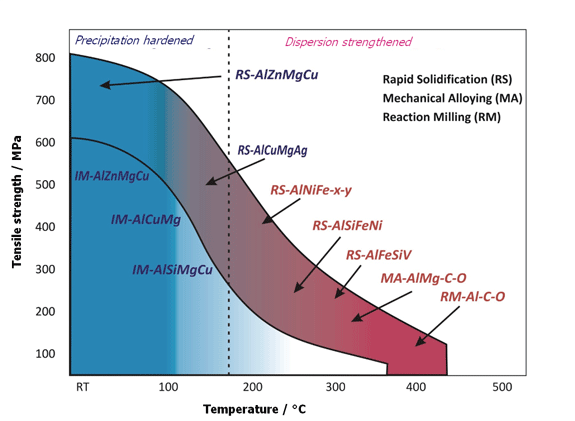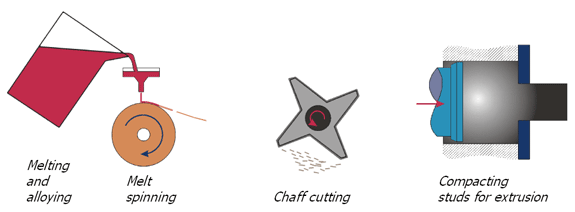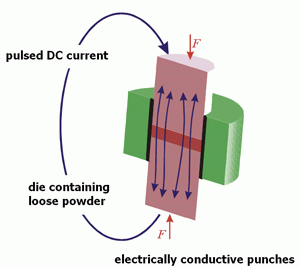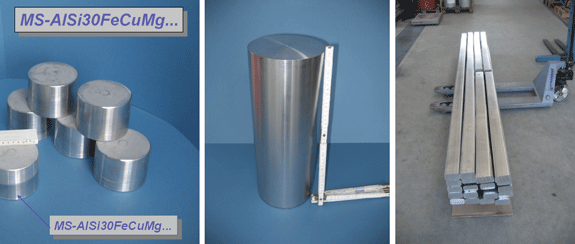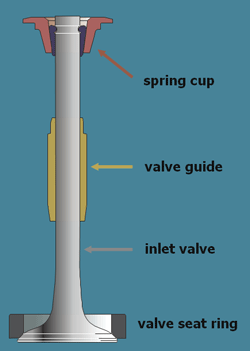2010 Hagen Symposium Reports: Aluminium alloys for demanding applications
Aluminium and its alloys are widely used materials. Aluminium is readily available in large quantities, has a low specific weight, excellent electrical conductivity, an attractive surface appearance and high corrosion resistance. Its limitations are where a high strength and stiffness, i.e. a high modulus of elasticity, is required and where elevated temperatures prevail.
The limits of aluminium alloys produced by ingot metallurgy (IM) are given by the lower curve in Fig. 1. The most advanced AlZnMgCu alloys achieve a strength level at room temperature (RT) of up to 600 MPa. At temperatures above 100°C the strength begins to drop drastically and IM alloys are hardly suitable for technical applications above 200°C because they lose too much strength. High performance PM aluminium alloys can extend the range of application to the upper curve in Fig. 1.
Two metallurgical concepts are employed for special aluminium alloys with high strength and wear resistance; precipitation hardening and dispersion strengthening. Precipitation hardening is possible both in IM and PM alloys, but PM can apply higher cooling rates because the heat can be extracted from a small powder particle much faster than from a larger volume. The results are much finer precipitates in the powder or even the suppression of precipitation in the first step and a better control of the amount and structure of precipitates after consolidation and heat treatment.
While precipitation hardening implies that the second phase providing the hardening effect is soluble in the melt, completely insoluble phases can be introduced in the material by mechanical alloying (MA). Reaction milling (RM) is a similar process where a chemical reaction leads to the generation of the hardening phase during a milling process. Both mechanical alloying and reaction milling are performed in high energy ball mills or attritors. The size of particles of the second phase is usually in the nanometer range.
Sufficiently high cooling rates of approximately 106 K/sec are achieved by rapid solidification (RS) processes such as melt spinning (Fig. 2). The resulting strip of 50 – 100 µm thickness and 10 – 30 mm width is processed into flakes of 0.5 – 1 mm length by chaff cutting and subsequently studs for extrusion are compacted.
A melt spinning wheel has an output of approximately 150 – 250 kg/h. Upscaling can be done by installing additional wheels. A processing gas is not required.
Raw powders produced by RS, MA or RM processes are consolidated by extrusion, hot isostatic pressing (HIP) or hot pressing. The hot pressing step is schematically shown in Fig. 3. The powder is filled into a cylindrical die and heated by a pulsed DC current under pressure.
Due to the variety of manufacturing processes PLM offers semifinished products of high performance aluminium like slugs, hot isostatically pressed billets and extruded profiles (Fig. 4).
Klaus Hummert proposed to apply high performance aluminium for the inlet valve of internal combustion engines and neighbouring components like the spring cup, valve guide and valve seat ring (Fig. 5). When compared to steel components the mass is reduced to one third. Weight savings in the automotive sector are particularly valuable with respect to energy consumption where masses are rotated or frequently accelerated and decelerated again.
The manufacturing steps leading to the finished component often involve chipless forming proc-esses. Due to the high strength of these materials the forces required are higher than for other aluminium alloys, but these processes are very economical for high volume production. Processing costs for this class of alloys have been much reduced in recent years, their competitiveness has been improved and new applications are expected in the near future.
News | Articles | Market reviews | Search directory | Subscribe to e-newsletter



